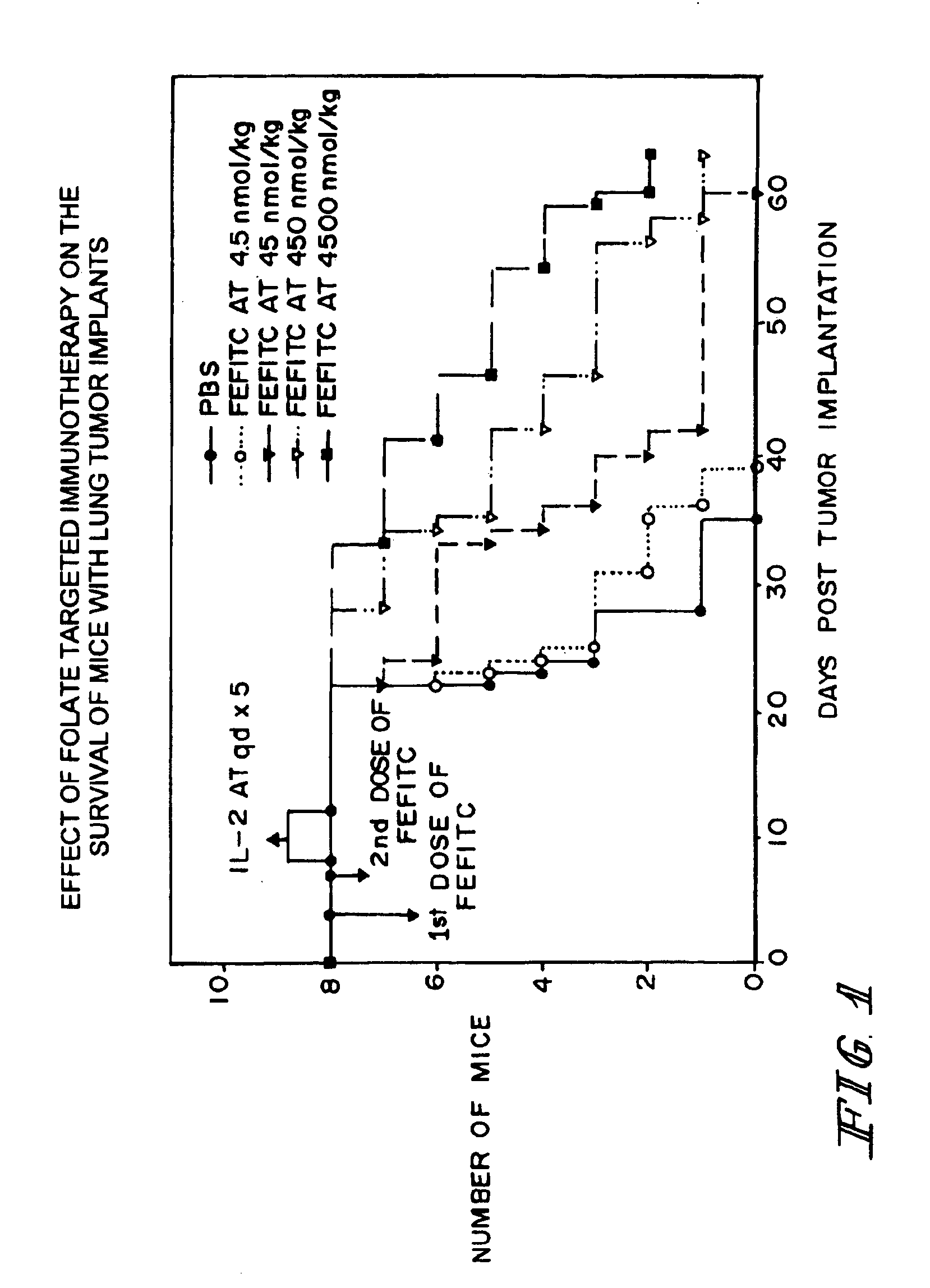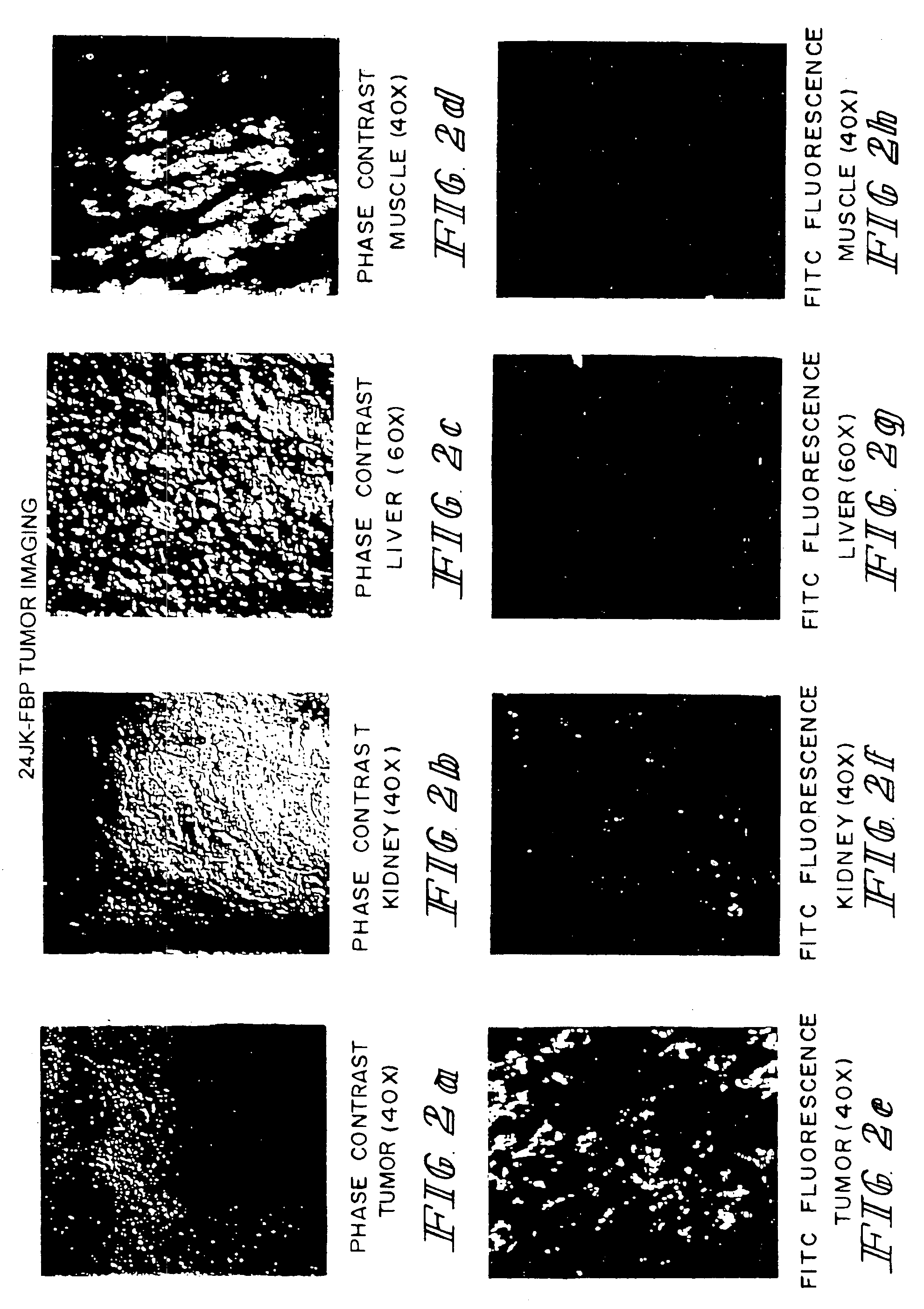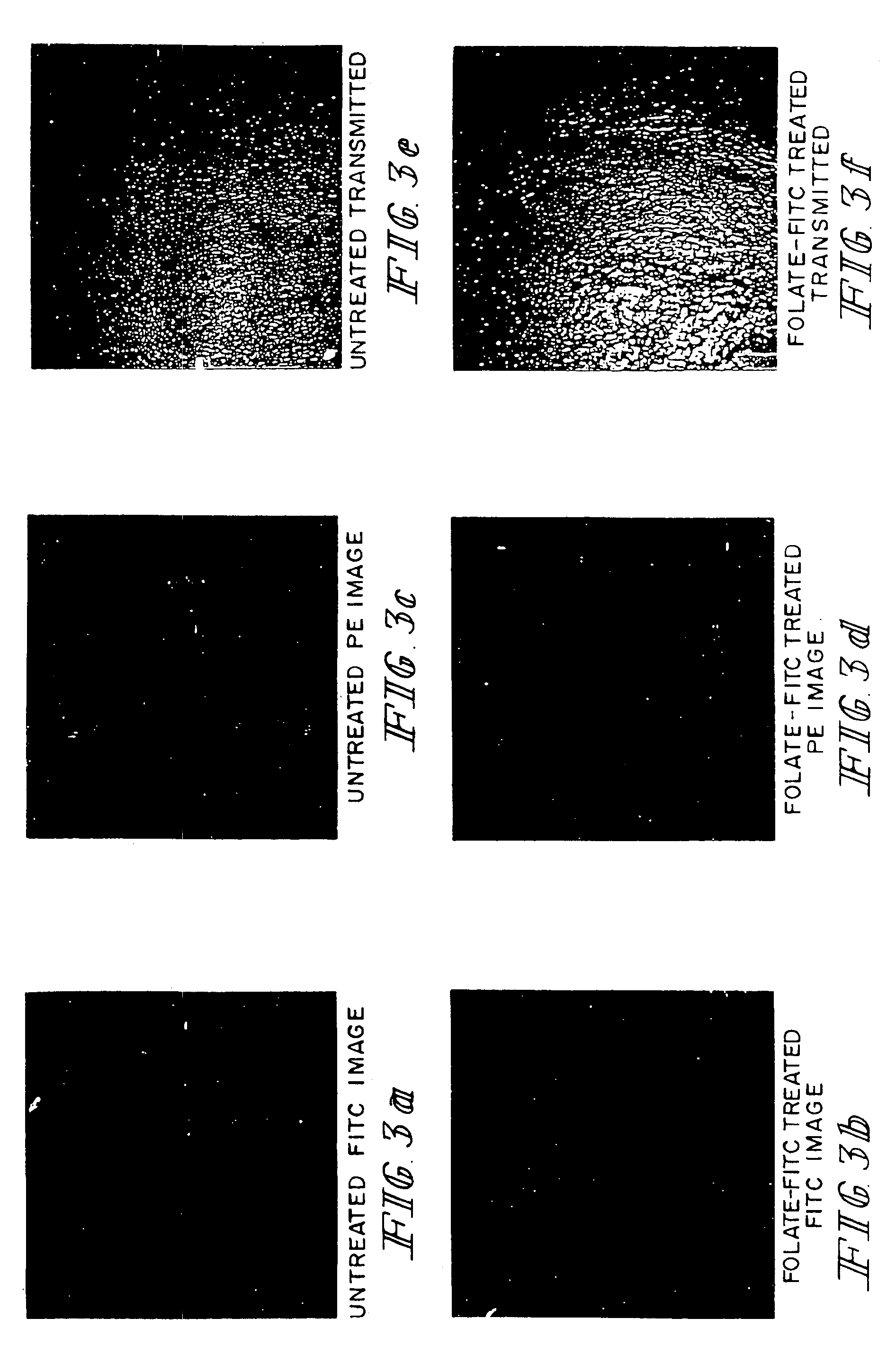Method of treatment using ligand-immunogen conjugates
a technology of conjugates and immunoglobulins, applied in the field of cell-targeted ligandimmunogen complexes, can solve the problems of complex approach, limited efficacy of chemotherapeutic agents, and adverse side effects of current radiation therapy regimens
- Summary
- Abstract
- Description
- Claims
- Application Information
AI Technical Summary
Benefits of technology
Problems solved by technology
Method used
Image
Examples
example 1
Effect of Folate-Fluorescein Isothiocyanate Conjugates on Survival of Mice with Lung Tumor Implants
[0054]Six to eight-week old (˜20-22 grams) female Balb / c mice were immunized subcutaneously at multiple sites with fluorescein isothiocyanate (FITC)-labeled bovine serum albumin (BSA) using a commercial adjuvant (e.g., Freund's adjuvant or Titer Max™-Gold). After assuring that anti-FITC antibody titers were high in all mice (as evidenced by the results of ELISA assays of serum samples of the mice), each animal was injected intraperitoneally with 5×105 M109 cells, a syngeneic lung cancer cell line that expresses high levels of the folate receptor. Cancer loci were then allowed to attach and grow. At 4 and 7 days post cancer cell implantation, all animals were injected intraperitoneally with either phosphate buffered saline (PBS) or a specific quantity of FITC-conjugated to folic acid via a gamma carboxyl-linked ethylene diamine bridge. The concentrations of folate-FITC injected were 0 (...
example 2
Imaging of Normal Versus Tumor Tissue with Folate Conjugated to Fluorescein Isothiocyanate
[0055]The procedures were similar to those described in Example 1 except that the animals were injected with 24JK-FBP tumor cells, and mice were sacrificed soon after injection with folate-FITC, and tissues were thin-sectioned and examined by FITC immunofluorescence using confocal fluorescence microscopy for localization of folate-FITC to particular tissues including tumor, kidney, liver, and muscle tissues. FIG. 2 shows phase contrast micrographs of the various tissue slices as controls along with the fluorescence micrographs. The folate-FITC was found to localize specifically in tumor tissue and in kidney proximal tubule cells where receptors for folic acid are uniquely abundant.
example 3
Imaging of Tumor Tissue with Folate Conjugated to Fluorescein Isothiocynate or with Phycoerythrin-Labeled Goat Anti-Mouse IgG
[0056]The procedures were similar to those described in Example 2 except that M109 cells were used, and tissues were examined by FITC fluorescence (green images), and phycoerythrin (PE) fluorescence (red images). For PE fluorescence, the fluorescent label was linked to goat anti-mouse IgG antibodies for use in detecting binding of endogenous mouse anti-FITC antibodies to the folate-FITC conjugate which accumulates on the tumor cells. Folate-FITC treated and untreated tumor tissues were compared, and both types of samples were also examined by phase contrast microscopy, as described in Example 2. The FITC fluorescence demonstrates localization of folate-FITC to tumor tissues (FIG. 3). The PE fluorescence demonstrates that endogenous mouse anti-FITC antibodies bound to the folate-FITC conjugates localized to tumor cells. Other studies (not shown) demonstrate the...
PUM
| Property | Measurement | Unit |
|---|---|---|
| molecular weight | aaaaa | aaaaa |
| median survival time | aaaaa | aaaaa |
| median survival time | aaaaa | aaaaa |
Abstract
Description
Claims
Application Information
 Login to View More
Login to View More - R&D
- Intellectual Property
- Life Sciences
- Materials
- Tech Scout
- Unparalleled Data Quality
- Higher Quality Content
- 60% Fewer Hallucinations
Browse by: Latest US Patents, China's latest patents, Technical Efficacy Thesaurus, Application Domain, Technology Topic, Popular Technical Reports.
© 2025 PatSnap. All rights reserved.Legal|Privacy policy|Modern Slavery Act Transparency Statement|Sitemap|About US| Contact US: help@patsnap.com



